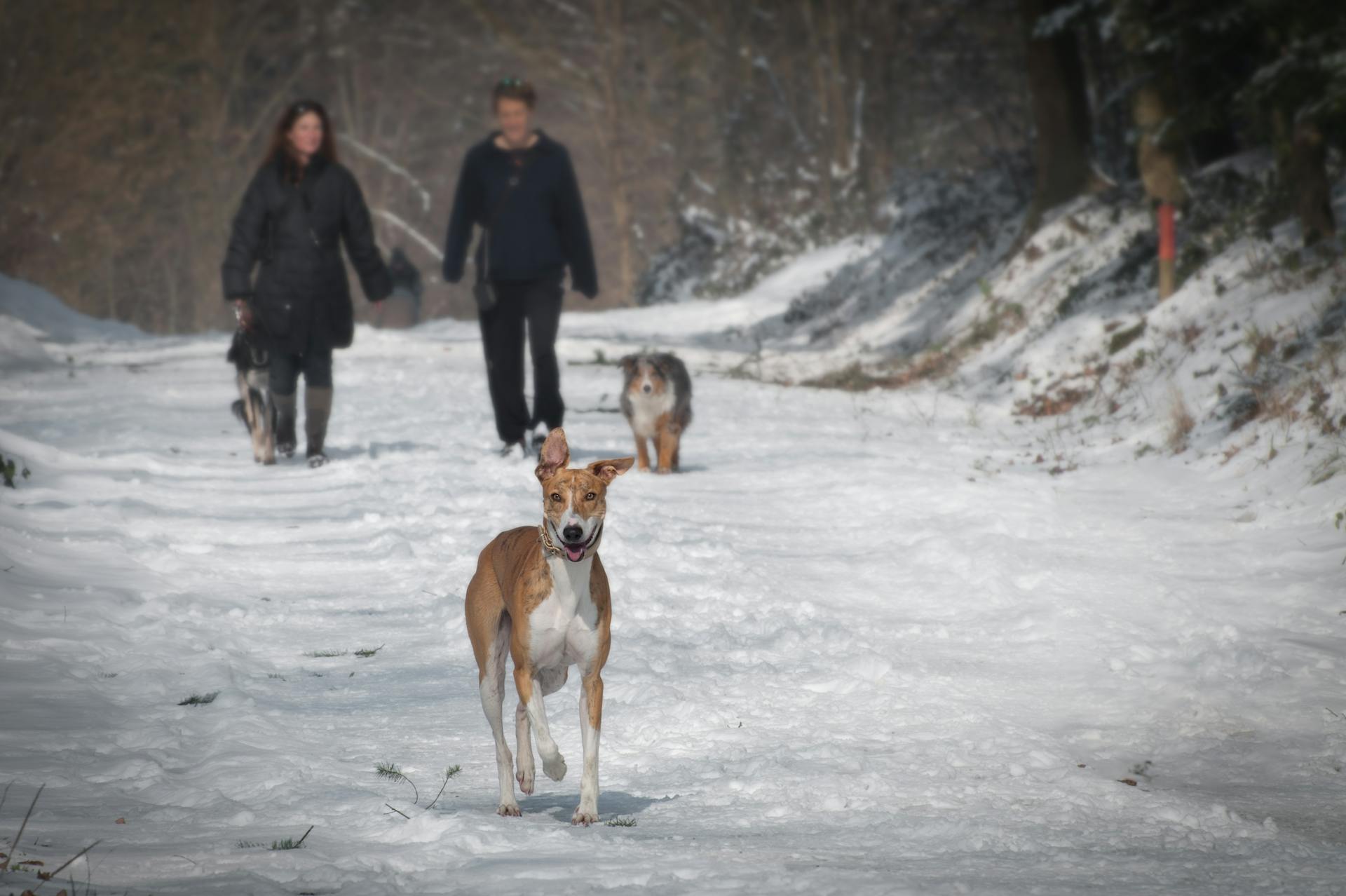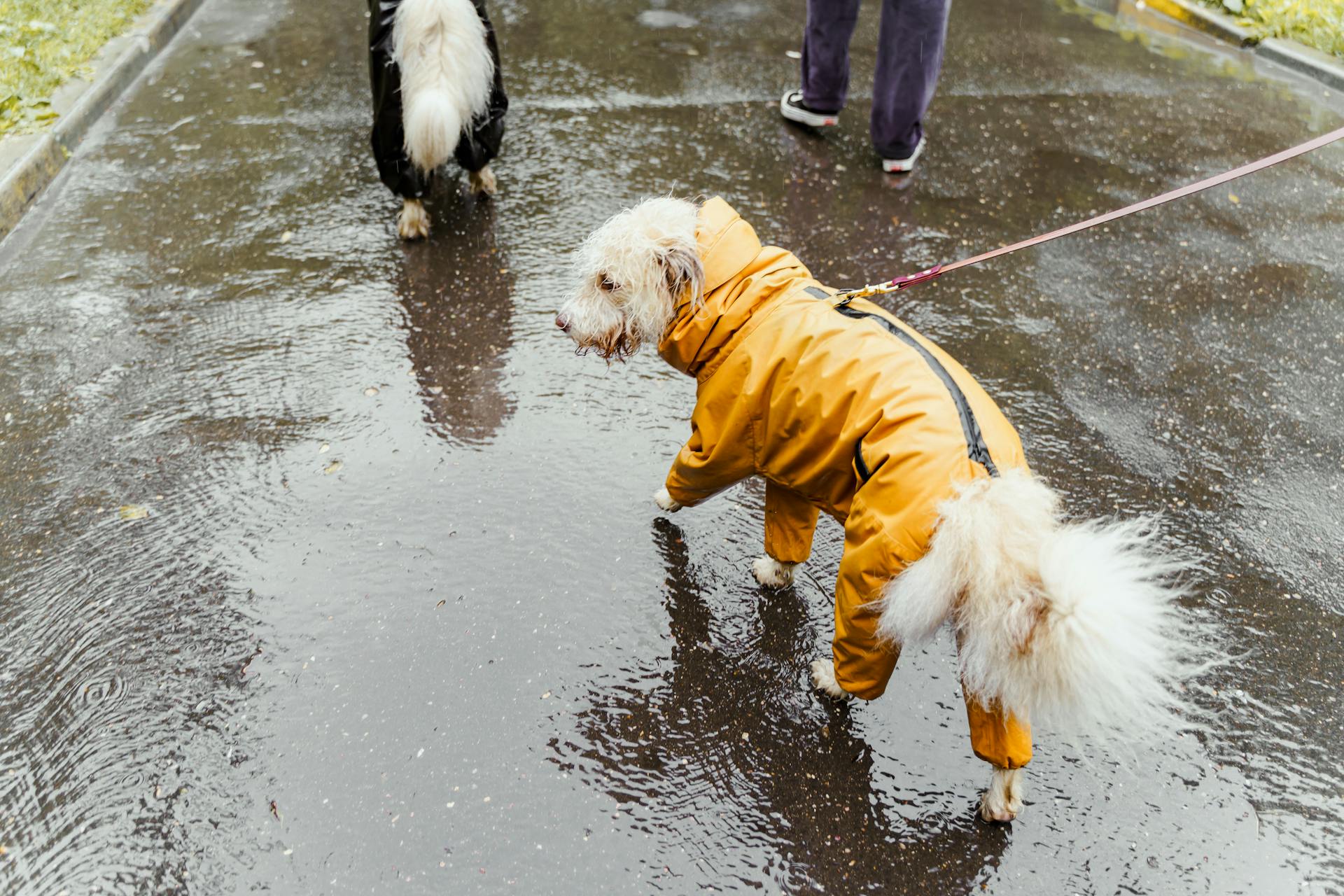
Dogs need walking to get enough physical activity to stay healthy.
Regular walking helps dogs maintain a healthy weight, which is crucial to prevent obesity-related health issues like diabetes and heart disease.
A lack of physical activity can lead to destructive behavior, such as chewing and digging, as dogs release pent-up energy in undesirable ways.
Walking also gives dogs a chance to engage their sense of smell, which is a vital part of their cognitive development and overall well-being.
Why Dogs Need Walking
Walking your dog is a simple task that has a positive impact on many aspects of overall health.
Regular exercise, like walking, is a good way to burn excess calories and keep the pounds off – for both you and your dog. This can help prevent obesity, a major health issue.
Joints, even old ones, need to work to stay healthy. Regular walking keeps joints in motion, improving their function and preventing stiffness.
Regular walking also helps regulate the digestive tract, preventing constipation in dogs who prefer to "go" on a schedule. This is especially important for preventing bladder infections caused by urine sitting in the bladder for long periods of time.
Walking exercises the mind as well as the body, providing mental stimulation for your dog that he can't get in a fenced area. This can help reduce destructive behaviors like chewing the couch.
Watching wildlife, exploring new paths, and seeing other people with their pets are all great mental stimulation for your dog.
Physical and Mental Health
Regular walking has numerous benefits for both you and your dog. It can help you get fitter and strengthen your muscles, bones, and joints. For dogs, exercise is essential to maintain a healthy body and prevent obesity, which is a significant problem in both species.
Exercise also helps to strengthen the muscles that support a dog's joints, which is especially important for dogs with joint issues. In fact, veterinarians often suggest exercise as a way to maintain joint integrity. Regular walking can also reduce the risk of fear and aggression in dogs, making them less likely to exhibit destructive behaviors.
Here's a rough guide to daily exercise quotas for dogs: Dog CharacteristicsRecommended Daily Exercise TimeToy-breed or less active breeds (e.g. bulldog)30-40 minutes (3 walks)Healthy adult dogsAt least 1 hour
By incorporating regular walking into your routine, you and your dog can enjoy numerous physical and mental health benefits, leading to a healthier, happier life together.
On a similar theme: How Much Exercise Do Husky Dogs Need
Consequences of Inadequate Exercise
Lack of exercise can have serious consequences for your dog's physical and mental health. In fact, dogs that don't get enough physical activity can become overweight, which can lead to a host of other problems.
Destructive behaviors like chewing on shoes or furniture, eliminating in the house, and getting into the trash are common issues that can arise from a lack of exercise. These behaviors can be caused by boredom, stress, or excess energy, and can be challenging to address.
Some dogs may become withdrawn and depressed if they're not getting enough physical stimulation. If your dog was once very social and now shows no interest in walks or playtime, it could be a sign of depression.
Hyperactivity is another potential consequence of inadequate exercise. If your dog gets over-excited when you take them for a walk or when you're about to head out the door, it may be a sign that they need more physical activity.
Discover more: How Much Exercise Does My Dog Need Calculator?
Dogs that don't get enough exercise may also bark and whine a lot. This can be a sign that they're not getting the physical and mental stimulation they need.
Here are some common signs that your dog needs more exercise:
- Destructive behaviors
- Withdrawal and depression
- Hyperactivity
- Excessive barking and whining
Keep in mind that these signs can also be caused by other factors, so it's always a good idea to consult with a veterinarian or trainer to determine the underlying cause.
Improved Sleep
Regular exercise can improve your sleep quality, helping you get the 7-9 hours of sleep you need each night.
A recent study by the CDC found that 1 in 3 adults don't get enough sleep, which can lead to conditions like obesity, diabetes, and high blood pressure.
Exercise can help you overcome the barrier of feeling too tired to get moving, especially when you're already exhausted from lack of sleep.
Even 30 minutes of light to moderate exercise, like taking your dog for a walk, can make a big difference in your sleep quality.
Just be sure to keep your walks to daytime hours, as exercising too close to bedtime can actually make it harder to fall asleep.
Curious to learn more? Check out: How Much Exercise Do Boxer Dogs Need
Healthier People

Regular walking can have a significant impact on our physical health. By incorporating daily walks into your routine, you can reduce the risk of coronary heart disease, osteoporosis, colon and breast cancer, and type-2 diabetes.
Walking for 30 minutes a day can make a big difference in preventing obesity, which affects nearly 75% of Americans. In fact, a study found that adults who regularly walked their dogs were less likely to be obese than their non-dog-owning neighbors.
Getting outside with your dog can be a great motivator to stick with a workout routine. Their excitement to get outside can help you establish a regular walking schedule, making it easier to see the benefits of physical fitness.
Increase Physical Fitness
Walking with your dog is a great way to increase physical fitness, and it's not just about getting your pup exercised. Regular walks can help strengthen your muscles, bones, and joints, making everyday activities feel easier.
You'll need to tailor your walks to your dog's needs and abilities, depending on their breed and age. For example, a 2-year-old border collie will have more endurance than an elderly pug.
Walking is a low-impact activity that can be done anywhere, making it perfect for those who are new to exercise or have mobility issues. It's also a great way to get some fresh air and sunlight, which is essential for overall health.
If you're planning a longer hike or walk on a hot day, don't forget to bring water and a bowl for your dog. You'll also need to check the surface you're walking on to ensure it's not too hot for your dog's paws.
Here are some general guidelines for walking your dog:
Remember, every dog is different, and their exercise needs will vary depending on their age, breed, and energy level. Be sure to check with your vet for specific recommendations on exercise for your dog.
Walking your dog can also have a positive impact on your mental health, reducing stress and anxiety while deepening your bond with your furry friend. So, grab a leash and hit the pavement – your dog (and you) will thank you!
Walking and Gear
Investing in the right gear can make a big difference in your dog's walking experience. Hughes uses his clients' leashes during walks, and recommends leashes with dual handles for more control and flexibility.
Leashes with dual handles offer two benefits: they allow for more control when your dog needs to heel, and give them room to roam on the way home. This can be especially helpful for dogs that get distracted or scared during walks.
Dogs that love to explore off-road may require extra gear, such as collapsible dog bowls or all-terrain boots. Ruff Wear's Bark'n Boots are a top seller, providing a snug fit and protection from the elements.
These boots can help prevent injuries on rocky or icy terrain, and are especially useful in places with salt-lined sidewalks in winter.
User-Friendly Gear
Investing in user-friendly gear can make a big difference in your dog's walking experience.
Using your dog's own leash during walks can help reinforce consistency.
Worth a look: How to Walk a Human a Dog's Guide?

Leashes with dual handles are a great option for dog owners. The short handle provides more control when your dog needs to heel and focus, while the longer handle gives them room to roam.
Martingale dog collars are a good choice for dogs that tend to get distracted or scared during walks. They are more difficult for dogs to shed out of if they try to flee.
Your dog should always wear ID tags with up-to-date contact info when they go outside. This ensures you can be reached if your dog gets lost.
For your interest: What to Feed Dogs without Dog Food
Extreme Pet Gear
Extreme Pet Gear is a must for active dogs and their owners. Patrick Kruse created Ruff Wear nearly two decades ago after his dog refused to drink water from a plastic baggie during their hike.
If you plan to take your dog off-road, they may require extra gear. Ruff Wear specializes in gear for active dogs such as backpacks, boots, coats, and harnesses.
Here's an interesting read: Wear Cone
The company's all-terrain Bark'n Boots are top sellers, priced at $64.95. Adjustable straps provide a snug fit while pooches tackle hiking trails or salt-lined sidewalks.
Distract your dog with a favorite toy or treat to avoid the "boot dance", that awkward adjustment period when dogs first try on new shoes. The sooner dogs are distracted, the sooner they avoid focusing on wearing shoes.
Insulated jackets and overcoats are also essential for keeping dogs comfortable in extreme weather. Start with the climate, and consider a cooling jacket to keep the sun off your dog's back in warm places.
Boots are vital for dogs that will be walking on ice and snow, or navigating rocky terrain. Ruff Wear fans stock up on boots to prevent injuries in the middle of nowhere.
The Importance
Dogs need walking to maintain a healthy weight and body condition, with regular exercise helping to burn excess calories and keep pounds off. Obesity is a major health issue, but walking is a simple and effective solution.
A general rule-of-thumb is that your dog should spend between 30 minutes and two hours being active every day. This can vary depending on breed, age, size, and overall health, but it's a good starting point.
Walking is essential for joint health, with immobility being a common health problem. Joints need to be moved regularly to stay healthy, and walking is a great way to do this. Even old joints can benefit from regular exercise.
Regular walking also helps with digestive and urinary health, regulating the digestive tract and preventing constipation. It's also important for preventing bladder infections by regularly emptying the bladder.
Dogs need mental stimulation, and walking provides a great opportunity for this. Watching wildlife, exploring new paths, and seeing other people with their pets can be mentally stimulating for dogs. This can help reduce boredom and destructive behavior.
A brisk walk can also keep joints healthy, and regular outings can even help with urinary and digestive health.
Sources
- https://www.helpguide.org/articles/pets/health-benefits-of-walks-with-your-dog.htm
- https://vcahospitals.com/know-your-pet/the-benefits-of-walking-your-dog
- https://www.treehugger.com/does-my-dog-really-need-three-daily-walks-cant-she-play-with-her-toys-instead-4862631
- https://academyanimal.com/news/how-to-know-if-your-dog-needs-longer-walks
- https://www.thefarmersdog.com/digest/how-much-exercise-do-dogs-need/
Featured Images: pexels.com


